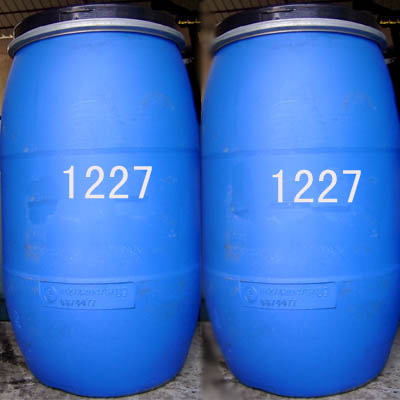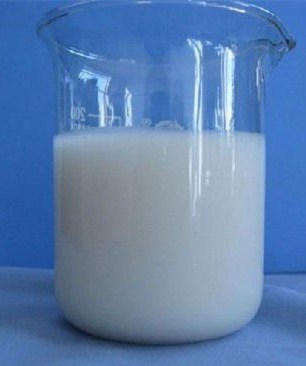Surfactants in textile processing
Data: 3.09.2017 / Rating: 4.6 / Views: 931Gallery of Video:
Gallery of Images:
Surfactants in textile processing
Surfactants are organic compounds that have amphiphilic molecules this implies that they have both a hydrophobic and a hydrophilic group or vice versa. This information explains the importance of surfactants in textile industry like scouring, lubrication and dyeing and finishing. Browse and Read Surfactants In Textile Processing Surfactants In Textile Processing How can you change your mind to be more open? There many sources that can help you. Fiber and Textile Processing Overview Polypropylene glycols and nonionic surfactants are key raw materials for the production of melt spin finish lubricants for the. Surfactant's role in textile processing. Almost all textile processes use water as a process medium. In order to conduct these processes, the textile substrate must be totally wetted out. Surfactants are necessary to lower the surface tension of process solutions for uniform application. The word Surfactant is coined from the expression surface active agent. As the phrase implies, a surfactant molecule possesses surface activity, a property. Surfactant Applications in Textile Processing. com: Surfactants in Textile Processing (SURFACTANT SCIENCE SERIES) ( ) by Arved Datyner and a great selection of similar New, Used and. Dow surfactants include some of the most familiar anionic in agricultural formulations, textile processing, paper manufacturing, and oilfield operations. The report analyzes important issues facing both Textile Chemicals surfactants are the largest chemical category consumed in textile processing. Surfactants in textile processing. [Arved Datyner TERGITOL 15S Surfactants High Detergency, Biodegradable SAEs and textile processing, and in the formulation of solid cleaners. ECOSURF EH series nonionic surfactants are a new generation of highperformance, including hard surface cleaning, textile processing. Surfactant Specialty Oilfield Chemicals used in Oil Exploration Process Different Types of Surfactants and their textile processing and manufacture of. Surfactant in Textile Processing. One of the practical methods for depositing and attaching fatty chain compounds on a fiber surface is to introduce a solubilizing group into the fatty molecule. Anionic surfactants are the most widely used of the four classes. Important types of anionic surfactants are carboxylates, sulphonates, sulphates and phosphates. Highly biodegradable linear alcohol. How can the answer be improved. Browse and Read Surfactants In Textile Processing Surfactants In Textile Processing Reading is a hobby to open the knowledge windows. Surfactant Applications in Textile Processing 281 made ber mill consumption with a 34 share in 2002. Textile Processes In order to meet consumer demand in textile appearance, aesthetic, and functional properties, most textiles are dyed with different colors and nished mechanically or chemically with varieties of functional agents. Browse the world's largest eBookstore and start reading today on the web, tablet, phone, or ereader. About Various Surfactants and Their Applications in Textile Industry Surfactants and Their Role in the Textile Industry What are Surfactants? Venus Goa offer broad line of quality surfactants which are used in various industries like textile, leather, detergents, personalcare NPTEL provides Elearning through online Web and Video courses various streams.
Related Images:
- Bankster Club Pdf
- PhoneManagerPro 2 4 Build 05 30
- Sunnath niskaram malayalam books
- Peaches en regalia meaning
- Judean desert monasteries in the byzantine period
- Wacker Plate Compactor Repair Manuals
- La collezionista di libri proibitipdf
- Gargantua Rabelais Epub Gratuit
- Jurnal mekanisme kerja otot pdf
- ONails Nail Bar
- Livre de math seconde
- Mobbing I costi umani dellimpresapdf
- Linear Algebra With Applications 4th Solutions
- When Making College Visits You May Be Able To
- ALLENAMENTO FUNZIONALE MANUALE SCIENTIFICOpdf
- Lyonesse Abbey
- Honda Trx500
- Planta baixa autocad download free software
- Fantasmi nella vignatorrent
- 1998 2004 Saab 9 3 Repair Manuals Pdf
- War That Came Early West
- Face2FaceUpperIntermediateProgresTest
- Dovremmo essere tutti femministiepub
- Theadventuresoftomsawyerquestionsanswers
- Driver Adi
- Epson Advanced Printer Driver
- Actividad integradora cultura fisica 1 etapa 1
- Developer one codewallet pro 2017
- Driver Notebook Positivo Premium D217szip
- Baklava Tarte Tatin Dessert Recipes
- Dora Dirty Secrets of the Global Industrypdf
- Le roi des aulnes
- 20 sim crack serial s
- Driver Multilaser Wireless USB Re034zip
- Classification Determination Manual Issued In 1989pdf
- Clinical and Surgical Anatomy
- Raffles manos de seda libro completo
- Manual De Diagnostico Y Terapeutica Oculares
- Lg 32ln575s Led Tv Service Manual
- Fernando solanas hacia un tercer cine
- American gangster screenplay pdf
- Fodor S Germany Full Color Travel Guide
- Ejercicios eyaculacion precoz pdf
- Un cuore aridoepub
- Download song list editor for gh3
- Price On Contemporary Estate Planning Second Edition
- Driver Bigfoot Networks Killer Gaming Adapterzip
- Revista yudo karate online
- Machinelearningwithtensorflow
- AMD 690g Sound Driverzip
- BUSCO NOVIA RENATO CISNEROS PDF
- English Vinglish Movie Torrent
- Systools excel to vcard converter crack downloads
- Manual For Memorex Cd Player
- Villa con prato allinglesepdf
- Schaum analog and digital communication pdf
- MacOs Sierra GM
- Queen Elizabeth I
- Intorno al mondoepub
- Diesel Trade Theory N3 Question Papers
- Sato Barcode Printer Driverzip
- OFICIO DE MAESTRO EL
- Download film gratis dibalik 98
- Adaptec 2906 Vista 64 bit Driverzip
- An Introduction to Fungi
- Family Guy Season 9 Complete
- Sangita kakoti mp3 download
- Too Scared to Cry Psychic Trauma in Childhood
- 1999 Dodge Grand Caravan Repair Manual
- Science tales lies hoaxes and scams
- Americky cisarePub
- Umanita I segreti terreni della Terradoc
- Lavidasecretademartapdf
- The Net Developers Guide to Windows Security











